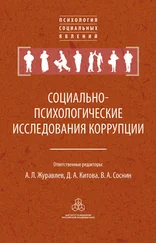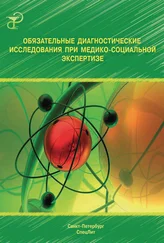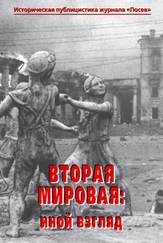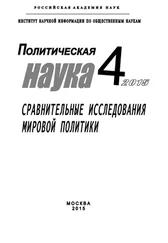E. N. Luttwak, The Grand Strategy of the Roman Empire: From the First Century A. D. to the Third (Baltimore: Johns Hopkins University Press, 1976), напр. с. 192.
И. Д. XIX, 7.2; И.В. II, 20.6; Жизнь 37.
Mazor, «Free Standing City Gates», с. 191–192; A. Stein, «Studies in Greek and Latin Inscriptions on the Palestinian Coinage under the Principate» (Ph. D. diss., Tel Aviv University, 1990), с. 222–259.
Платеи – греческое название главных артерий города; декуманус максимус – главная улица, ориентированная в римском городе с востока на запад; кардо – улица, ориентированная там же с севера на юг. – Прим. ред.
A. Segal, From Function to Monument: Urban Landscapes of Roman Palestine, Syria and Provincia Arabia (OMS 66; Oxford: Oxbow, 1997); Mazor, «Free Standing City Gates».
G. Mazor, W. Atrash, and D. Sandhouse, Nysa-Scythopolis: The Agora, Final Report (Bet Shean 8; IAA Reports; Jerusalem: IAA, готовится к печати); G. Mazor, «Concerning the Urban Plan of Aelia Capitolina: Colonnaded Streets, Monumental Arches and City Gates» [иврит], ErIsr 28 (2007): 116–124.
Zanker, «City as Symbol», с. 33.
Mazor and Najjar, Caesareum and Odeum , с. 181–190; G. Mazor, «Imperial Cult in the Decapolis, Nysa-Scythopolis as a Test Case», 2016.
MacDonald, Architecture of the Roman Empire , 2:181.
Грандиозные строительные проекты Ирода невозможно полноценно описать в короткой сноске; библиографию по этому вопросу см. в кн.: Roller, Building Program . В то время как ученые утверждают, что Ирод был первым, кто построил в Антиохии колоннадную улицу, это, кажется, произошло позже (при Тиберии), но он действительно был первым, кто построил в этих краях театр и амфитеатр (в Кесарии Приморской), а также бани. На примере Храмовой горы мы видим, как была адаптирована архитектурная концепция кесариума, а пристальное изучение дворцов в Иерусалиме, Иродионе и Иерихоне позволяет усмотреть влияние новой имперской архитектуры и в восприятии пространства, и в наиболее выдающихся архитектурных идеях и деталях. Все эти архитектурные градостроительные проекты как в царстве Ирода, так и за пределами его владений, служили мощными движущими силами и эффективным инструментом для выражения символической идеологии и личной системы образов как самому Ироду, так и его патрону, Октавиану Августу, и Римской империи.
MacDonald, «Empire Imagery: Baroque Modes», Architecture of the Roman Empire , 2:221–247.
W. L. MacDonald, The Architecture of the Roman Empire, vol. 1: An Introductory Study (rev. ed.; YPHA 17; New Haven: Yale University Press, 1982), с. 181.
MacDonald, Architecture of the Roman Empire , 2:245.
Raison d’être (фр.) – смысл существования. – Прим. ред.
Mazor, «Free Standing City Gates», с. 185–188.
Segal, From Function to Monument .
MacDonald, Architecture of the Roman Empire , vol. 2.
Margaret Lyttelton, Baroque Architecture in Classical Antiquity (SAAA; Ithaca, N. Y.: Cornell University Press, 1974); MacDonald, Architecture of the Roman Empire , 2:180.
B. Bagatti, The Church from the Circumcision: History and Archaeology of the Judaeo-Christians (trans. E. Hoade; SBF Minor Series 2; Jerusalem: Franciscan, 1971); idem, The Church from the Gentiles in Palestine: History and Archaeology (trans. E. Hoade; SBF Minor Series 4; Jerusalem: Franciscan, 1971).
О церковной архитектуре см.: R. Krautheimer, Early Christian and Byzantine Architecture (ed. R. Krautheimer and S. Ćurčić; 4 thed.; New Haven: Yale University Press, 1986); о церквях, найденных во время раскопок на Святой Земле см.: A. Ovadiah, Corpus of the Byzantine Churches in the Holy Land (trans. R. Kirson; Theoph. 22; Bonn: Hanstein, 1970). О церквях в Трансиордании см.: A. Michel, Les Églises d’époque byzantine et umayyade de la Jordanie (BAT 2; Turnhout: Brepols, 2001); о мозаичных полах, найденных в Трансиордании см.: L. Habas, «The Byzantine Churches of Provincia Arabia: Architectural Structure and their Relationship with the Compositional Scheme and Iconographic Program of Mosaic Pavements» [иврит] (Ph. D. diss., Tel Aviv University, 2005).
H. Gitler and O. Tal, T he Coinage of Philistia of the Fifth and Fourth Centuries BC: A Study of the Earliest Coins of Palestine (New York: Amphora, 2006), с. 13.
В Палестине до эпохи Ахеменидов клады из обрезных серебряных монет «как правило, заворачивались в матерчатые мешки и, скорее всего, опечатывались глиняной печатью или несколькими печатями (об этом свидетельствуют клады из Дора и Телль-Кейсана)». Были найдены похожие клады, относящиеся к эпохе Ахеменидов, из т. н. «рубленого серебра», однако они в большинстве своем содержали небольшие серебряные обрезки и украшения, такие как серьги и кольца для носа (Gitler and Tal, Coinage of Philistia , с. 10–11).
И более того, экономическая система, основанная на бартере, сохраняла свое значение на протяжении тысячелетий; она и сейчас представляет собой распространенный способ ведения финансовых операций; в качестве дискуссии см.: D. Hendin, Ancient Scale Weights and Pre-Coinage Currency of the Near East (New York: Amphora, 2007), с. 23–29.
Читать дальше
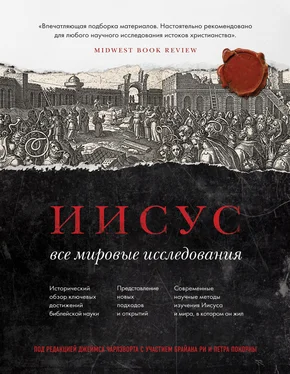
![Коллектив авторов - Что мы думаем о машинах, которые думают [Ведущие мировые ученые об искусственном интеллекте]](/books/31211/kollektiv-avtorov-chto-my-dumaem-o-mashinah-kotorye-thumb.webp)


